If bond yields are tracking lower, where does that leave equities?
The US is at the centre of financial markets: When it sneezes, the world catches a cold. So recent concerns around inflation have put the world on notice. But, curiously, there is a divergence in the behaviour of bond yields: they have headed lower.
“Why have they been tracking lower? We think there are 3 key reasons for that. 1. Technical. 2. Economic. 3. Liquidity factors.”
In the recent Fidante/Longview Economics Webinar, Chris Watling addressed whether it is time to start getting worried about inflation, the drivers of this bond yields behaviour and his global macro and markets outlook for 2021 and beyond.
Against bond yield consensus: markets confounding the pundits
Hedge funds were deeply short bonds in March-April in expectation of a likely rise to 2-2.25% yield on the US 10-year bond. In reality, the opposite has happened, with rates peaking in March – consistent across the world.
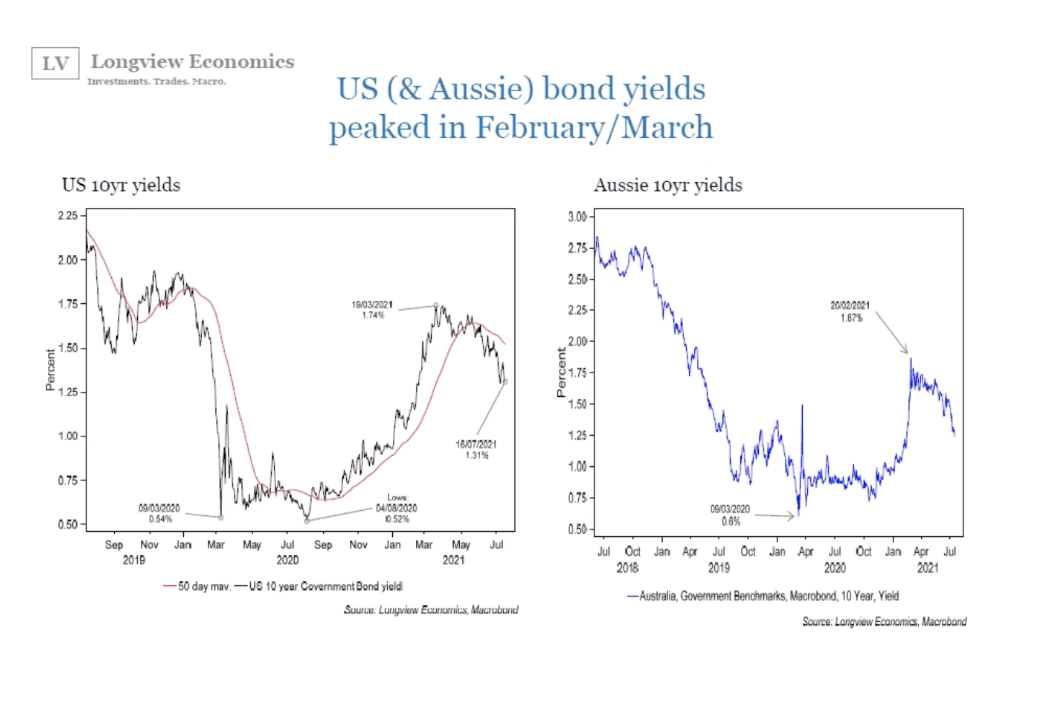
Watling does not believe this is a symptom of the emerging delta variant.
The UK is heavily vaccinated and is reopening. The case numbers have risen a huge level, but vaccinations appear to have broken the link between infections and subsequent hospitalisations/death rates, with have both tailed off significantly.
“The vaccinations look effective, so I think therefore to claim that bond yields are down because of the delta variant is misleading, and I’d say quite the reverse…”
Instead, Watling credits 3 key reasons:
- Technical: Bond sentiment was very bearish and deeply oversold at levels not seen since Trump’s 2016 election and post the 2013 taper tantrum. From a positioning perspective, bonds needed a counter-trend move and that is what is starting to play out.
- Economic: Bonds price in stimulus and peaks of global growth rates very quickly: They indicate when this growth is likely to soften and act as a growth regulator of economies. Yields will back up when growth accelerates and vice versa. It primarily occurs through cyclical areas such as housing in the US. Mortgage applications peaked earlier this year and homebuying conditions have bottomed. As mortgage rates back up, housing slows as it becomes more expensive. So, the initially rising bond experienced softened parts of the economy which impacted growth. Bond yields had to adjust downwards to restimulate the economy.
- Liquidity: Banks are awash with liquidity at the moment, and they have been buying up 10-year treasuries, pushing the price up and yields down.
Initial market reactions to tapering or ending of QE programs will induce falls in the yield: As there is the prospect of less stimulus in the system yields will soften.
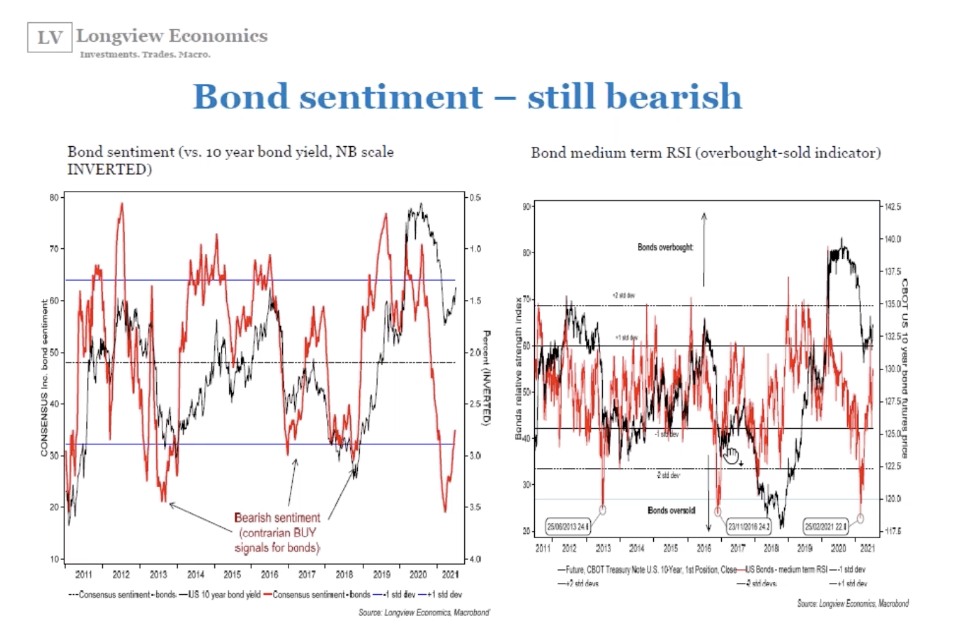
But what about inflation?
We have clearly seen inflation through the economy, even when excluding shelter inflation (adjusted given its dominance). Watling argues that it is likely to be transitory in the short term and the headline figures are being driven by unique cases.
“The massive prices are being infected by one-offs: secondary car prices, semiconductors and supply chain issues… They are broadly fine and tracking at sensible levels…The supply side has been well protected: Bankruptcies are very low and there have been a ton of new business applications to feed all the demand coming through as the US economy opens up.”
With these encouraging signs, bond yields have been able to track lower because of the transitory nature of inflation in the near term.

If bond yields are tracking lower, where does that leave equities?
Bull markets tend to behave in similar ways. Phase 1 brings very strong and aggressive movements with almost 30% of gains over the first year. Risk is priced out in the form of collapsing volatility and high yield corporate spreads, and equity markets rally. A new economic recovery is priced in.
“That is what happened in 2003, and I would argue that’s exactly what has happened over the last 12 months, since March 2020.”
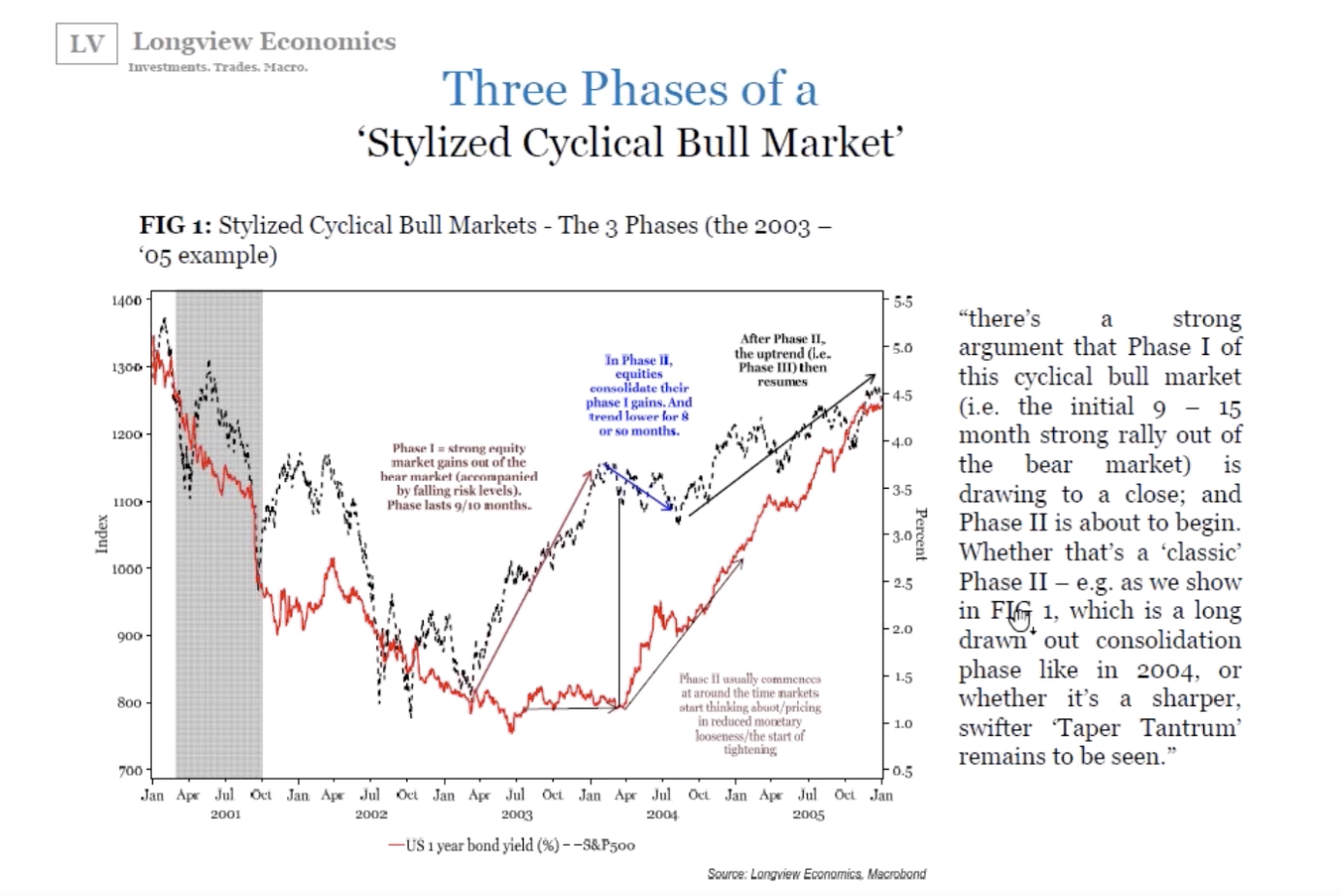
These gains are consolidated in phase 2 and cautions around whether stimulus will be withdrawn starts to emerge. This pushes it to track sideways, as seen in 2004.
“Since global growth rates peaked in March, much of the global stock market has been tracking sideways really for the last several months”
Only the S&P500 has showed continued with strength, predominantly driven by the powerful FAAMG stocks.
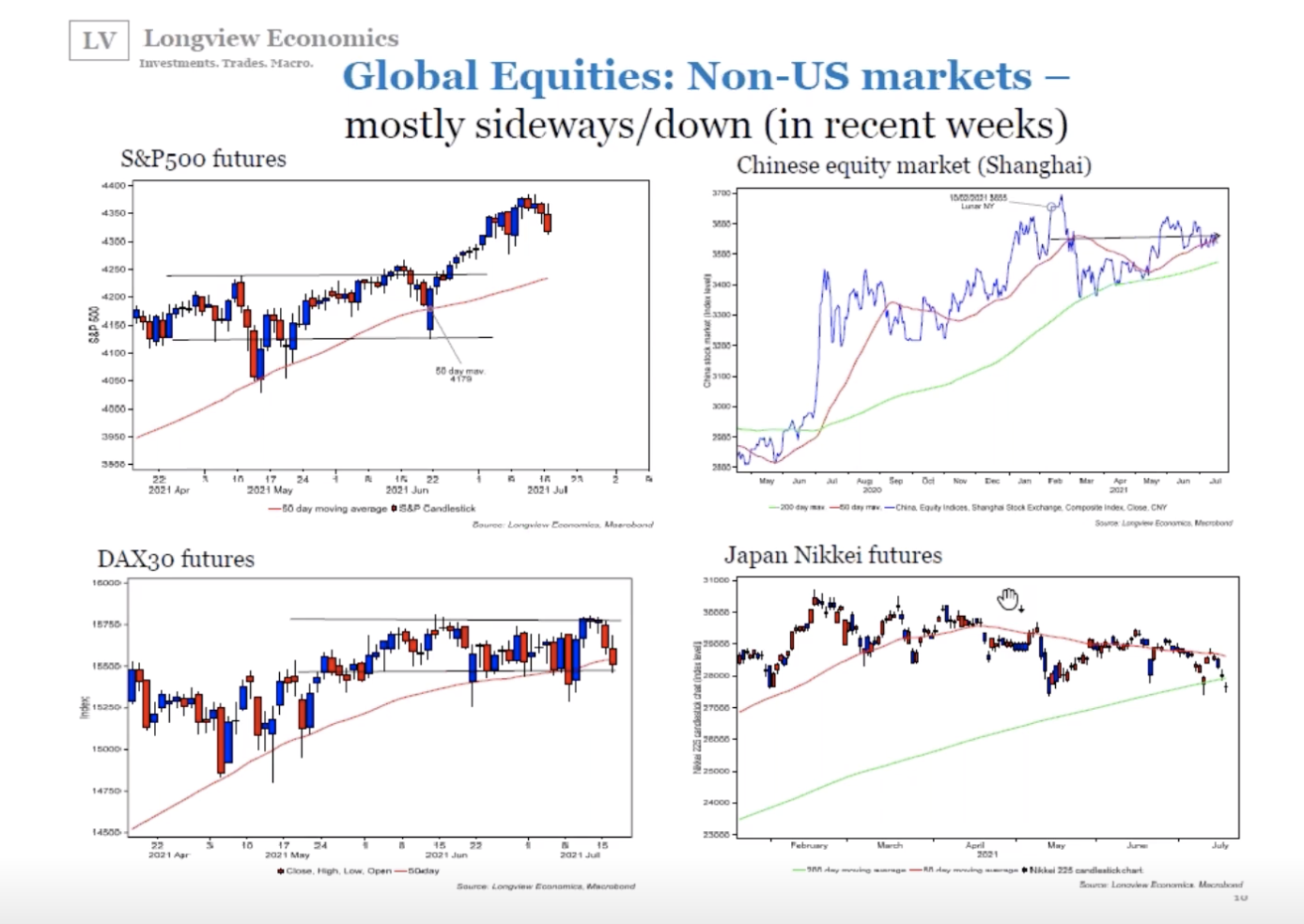
The confidence in markets is continuing, with very few market participants feeling bearish. According to the Bank of America Merill Lynch Fund Manager Survey, the net percentage of fund managers who are overweight equities is as high as it has been over the last 20 years.
“There is a lot of complacency (in markets). Risk premiums have collapsed, markets are expensively priced…Earnings growth is a bit over stretched.”
Looking beyond the next few months to the medium term, forward PE ratios are near the TMT peak in 2000; this is a global phenomenon.
“There is a good argument that within stock markets that have a lot of cyclical elements, often PE ratios are high at the start of bull markets because commodity prices remain high and feed through to good cash earnings and earnings growth. High iron ore prices mean a lot of miners are cash cows at the moment.”
And we have certainly seen that occur with Rio Tinto and Lynas reporting huge numbers on the back of resurgent iron ore prices.
“Overall, the outlook for earnings is very good. The thing we worry about is inflation in 2022 and 2023.”
Inflation in 2022 & beyond: Labour market, monetary policy and stimulus
Moving into the long term, there are a number of key drivers for inflation.
“This pandemic has been much more like a shock than a recession. When an economy goes into a shock, it recovers very quickly... When you go into a recession, you get deep economic scarring and it takes many years to get back to where you were before the recession started.”
This was seen in the aftermath of the GFC, where the labour market took 7 years to return to previous levels. Watling forecasts this recovery to full employment will arrive in 3 years.
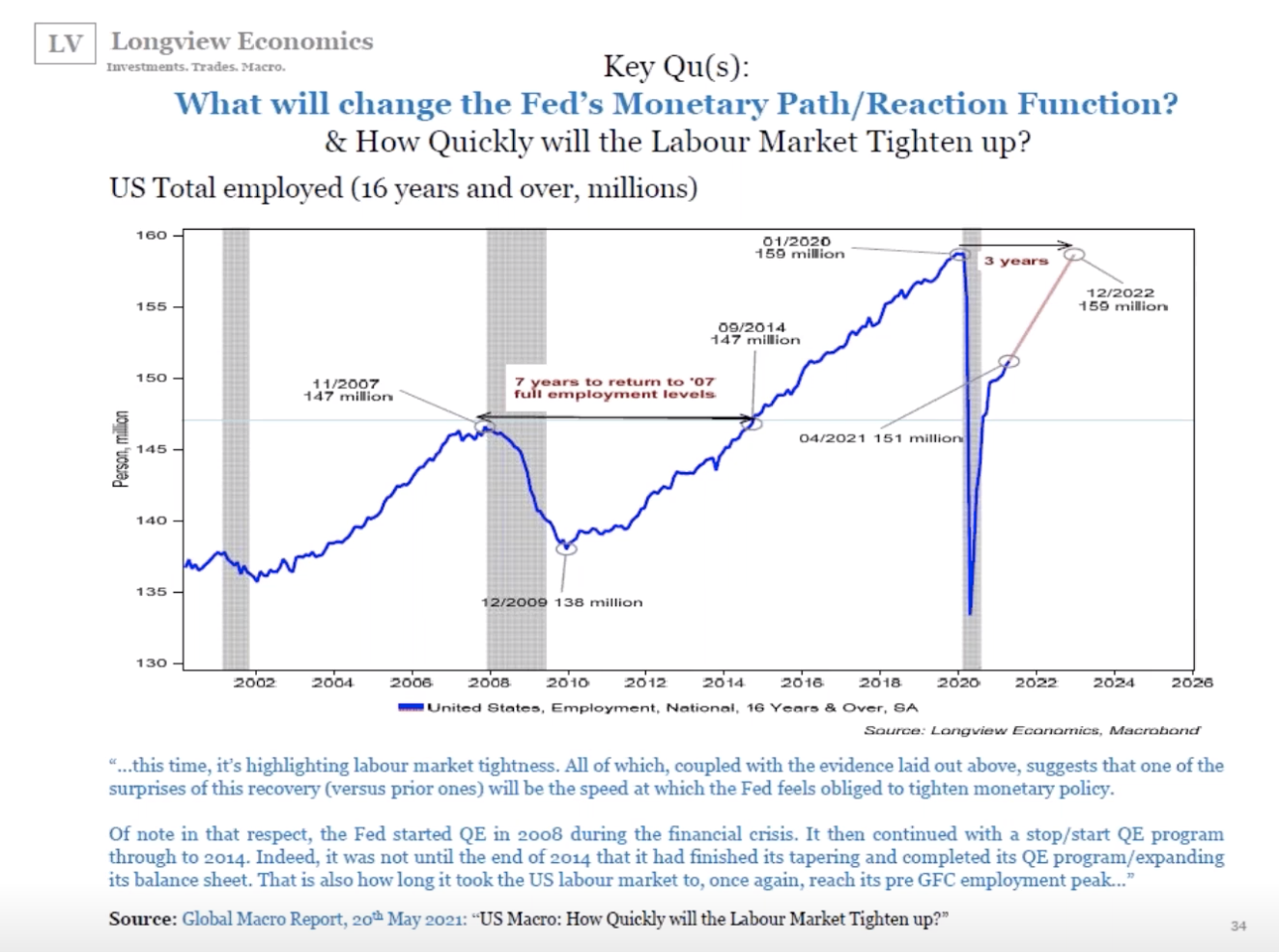
Bank credit will grow much faster in this cycle, and the higher credit flowing through the economy will correlate with higher core CPI. As a result, attention will have to be paid to productivity growth in order to assess whether this inflation is being absorbed.
So what are the implications for investing?
Households will be re-levering: a stark change from the past decade where baby boomers have focused on saving. Millennials are looking to buy houses and engage in spending.
“So, on a 12-18 month view: I think value and cyclicals will come back – that trade is paused for a few months but I think it comes back given similarities with the noughties (strong housing market, strong consumer confidence and credit growth)…I think it will also cause a weak US dollar because they will be looking to suck in a lot of imports. When growth is doing well, such as in the 90s, you get a strong dollar because the US is bringing in capital (as opposed to consumer goods).”
This movement in currency also supports the idea of a commodity supercycle, alongside loose monetary policy and climate change influence on commodity usage. For example, copper demand is set to explode as EVs become the norm. Similar arguments can be made across many commodities.
There is a tactical (short term) view that is very different to more longer-term strategic views. These focus on the primary trends in markets such as commodities, cyclical and value movements, the shape of growth supported by strong housing markets and a reformed banking system. Watling thinks inflation is transitory now, but it will be coming back in 12-24 months. And this is what to look at closely:
“That is the risk we have from the Fed and that will be there for the PE ratio. But for now, the earnings and economic growth looks good, and therefore we are positive on the primary trends.”
Never miss an insight
Enjoy this wire? Hit the ‘like’ button to let us know. Stay up to date with my content by hitting the ‘follow’ button below and you’ll be notified every time I post a wire.
Not already a Livewire member? Sign up today to get free access to investment ideas and strategies from Australia’s leading investors.
3 topics
1 contributor mentioned

